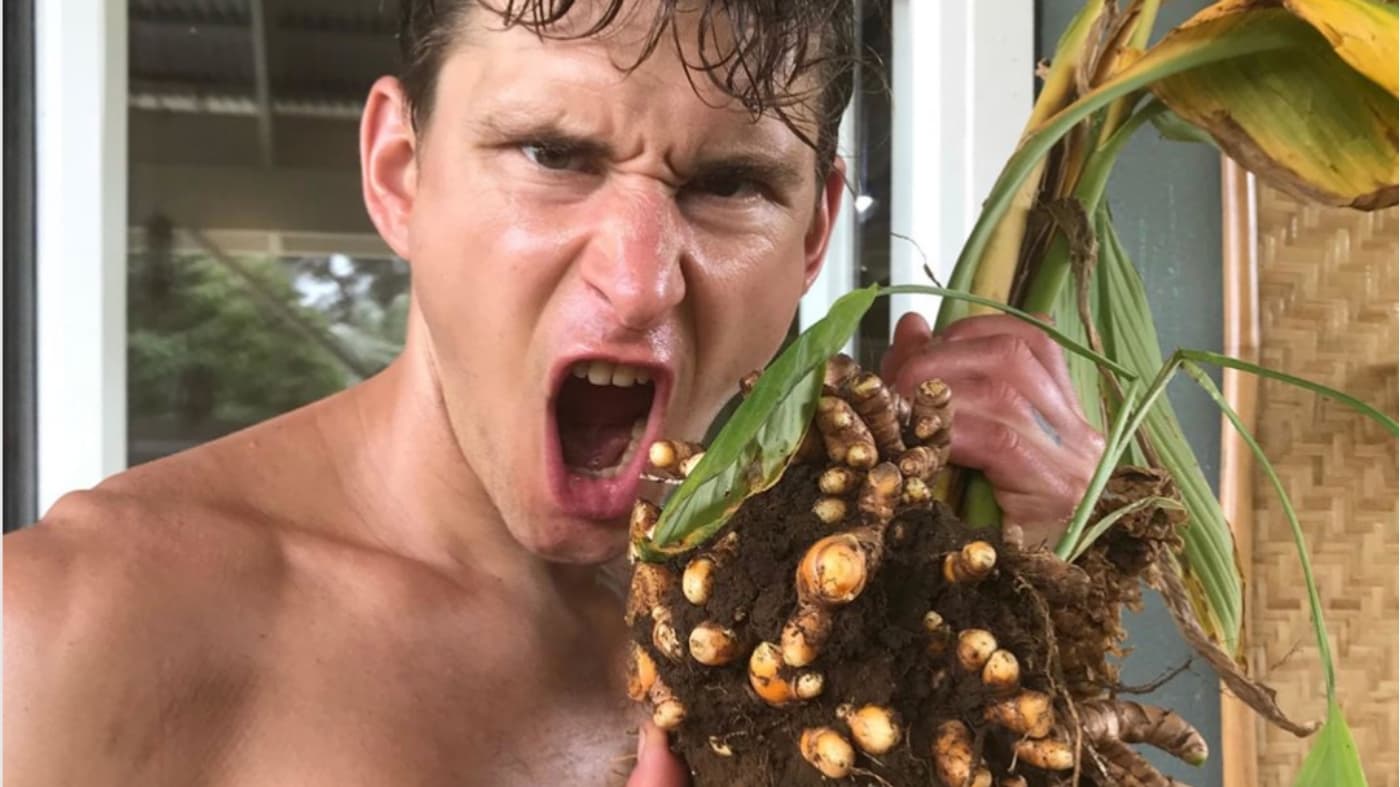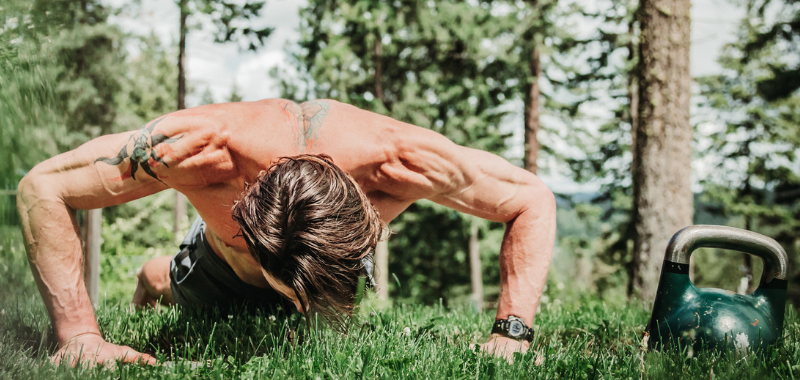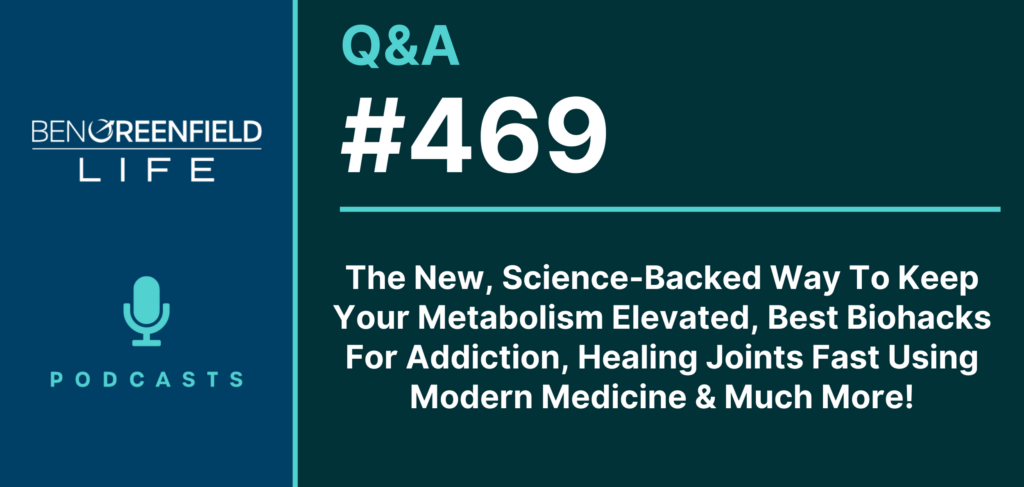November 12, 2019
Turmeric, pictured above in all of its whole, unadulterated glory is everywhere nowadays: supplements, beauty products, salad dressings, fancy overpriced lattes; it's even made its way into chocolate. You've probably had your fingers or countertops stained by turmeric, sprinkled turmeric powder on your salads or smoothies, or started taking a turmeric supplement for any number of the seemingly infinite benefits of this wonder-spice.
But when it comes to the difference between turmeric and curcumin, many are left scratching their heads.
- Do I need to take turmeric with black pepper?
- Can I just drink turmeric tea, or are supplements better?
- Is turmeric more easily absorbed by taking it with fat?
- Turmeric vs curcumin, which is better?
- What's the best source for bioavailable turmeric?
In today's article, you'll discover the answers to all of these questions, get a brief tutorial on the history of turmeric, and much more as I give you a crash course in everything turmeric. You'll also learn about something I've never before discussed that's taken my recovery to a whole new level.
Turmeric Vs. Curcumin (& The Big Problem With Curcumin)
Turmeric and curcumin are (incorrectly) used almost interchangeably, but even though curcumin comes from turmeric—when it comes to their uses, benefits, and bioavailability, the differences between the two are fairly significant.
When you see a turmeric supplement or turmeric powder in the spice aisle of your grocery store, what you're seeing is simply a ground-up version of a turmeric rhizome (Curcuma longa), which is a perennial plant belonging to the family Zingiberaceae. If you've never seen it, it looks a lot like ginger but with a more vibrant, orange color.
This color comes from polyphenolic pigments, which are derived from curcuminoids. There are three main curcuminoids: demethoxycurcumin, bisdemethoxycurcumin, and of course, curcumin. If that last one sounds familiar, but the rest don't, that's because many of the health benefits attributed to turmeric come from the many, many studies done on curcumin…
- Curcumin: A Review of Its’ Effects on Human Health
- Role of Curcumin in Disease Prevention and Treatment
- Therapeutic Roles of Curcumin: Lessons Learned from Clinical Trials
- Antioxidant and anti-inflammatory properties of curcumin.
- Anti-inflammatory properties of curcumin, a major constituent of Curcuma longa: a review of preclinical and clinical research.
- Efficacy of Turmeric Extracts and Curcumin for Alleviating the Symptoms of Joint Arthritis: A Systematic Review and Meta-Analysis of Randomized Clinical Trials
- Safety and anti-inflammatory activity of curcumin: a component of turmeric (Curcuma longa).
You get the idea. There's no shortage of research on curcumin. It's not only the most studied curcuminoid but it is also the most abundant curcuminoid found inside the turmeric plant. The natural ratio of curcuminoids found in turmeric is approximately 77% curcumin, 17% demethoxycurcumin, and 3% bisdemethoxycurcumin.
There's no doubt that curcumin has become increasingly popular in recent years and is widely known as the potent active ingredient in turmeric. It's been touted as a miracle remedy for everything from inflammation to cancer due to its ability to help boost your cells’ resistance to damage and infection, and there are even studies showing curcumin can assist your body in detoxification.
I've talked about curcumin quite a bit myself in podcasts and articles, including:
- Ben Greenfield’s Ultimate Supplement Guide – Your Complete Resource For Supplementing Choice, Timing, Dosing & More.
- Does Marijuana Shrink Your Brain, Building Muscle With Vitamin D, Best Ways To Track Fat Loss & More!
- The Ultimate Guide To Quelling Inflammation: Why Your Curcumin May Not Work, Surprising Effects Of Ginger Oil, Vegan Fish Oil Options & Much More!
But there's just one problem. Curcumin is fat-soluble, so despite its wide array of purported benefits, the bioavailability of curcumin in humans and animals is extremely low.
It also has a high rate of metabolization and rapid systemic clearance. So getting enough curcumin into your system to reach blood levels sufficient to exert its bioactivity isn't all that simple. Basically, you’d have to take somewhere around 3-5 teaspoons of turmeric per day to get adequate curcumin amounts into your body.
That's a lot of turmeric.
But let's say you're OK with a day filled with perpetual, high-dose turmeric ingestion. Even then, curcumin is so poorly absorbed that it's essentially useless unless you combine it with something that increases its bioavailability. The first, which you may be familiar with, is black pepper. On many supplement labels, you'll see this listed as a patented extract obtained from black pepper fruits called BioPerine, which has been used as a bioavailability enhancer in the supplement industry for over two decades now. I've used this trick myself…
One of the ultimate nutrition biohacks: black pepper + turmeric + just about any fat (in this case, seafood): https://t.co/9uUTYmZ0wx
— Ben Greenfield (@bengreenfield) February 1, 2017
Another workaround to increase the bioavailability of curcumin is via the use of phytosomes. Phytosomes are plant extracts that are bound to the molecule phosphatidylcholine. Our bodies naturally make phosphatidylcholine, but you can also get it from food or supplements, and it is actually very well absorbed. When you attach curcumin to phosphatidylcholine, you get almost instant absorption of curcumin and approximately 30x more bioavailability vs. when taking curcumin alone.
Anyway, you may be perfectly happy sipping black pepper and turmeric tea or popping curcumin-phosphatidylcholine supplements to biohack your curcuminoid bioavailability, but I haven't even scratched the surface when it comes to the limitations of turmeric and curcumin.
Beyond Curcumin: A New Molecule Isolated From Turmeric
You just learned that approximately 77% of the curcuminoids found in turmeric are pure curcumin. That seems like a pretty decent amount…until you consider the fact that these curcuminoids make up a minuscule 2-6% of the turmeric rhizome!
So what about the other ~95% of turmeric? Is it completely useless?
After all, the entire turmeric rhizome has been used in Ayurvedic medicine for over 4,000 years. For most of this time span, patented Bioperine extracts and phosphatidylcholine molecule supplements to increase bioavailability didn't exist—nor did the technology to extract appreciable amounts of curcumin from turmeric. Instead, turmeric's long history of culinary, medicinal, and cosmetic use in India included (and still includes today) water-based (known as Kashaya) and fat-based (oil, ghee, etc.) preparations (known as Sneha) as well as powder preparations (known as Churna).
If these ancient healers have been harnessing the power of turmeric for thousands of years—in fresh juices, teas, tinctures, and powders and topically in creams, lotions, pastes, and ointments—then why has most of the research up until very recently been centered around the curcuminoids (which are a fraction of 2-6% of the plant)?
Consider this anecdote from the book Herbal Medicine: Biomolecular and Clinical Aspects:
“The use of turmeric dates back nearly 4000 years to the Vedic culture in India, where it was used as a culinary spice and had some religious significance. It probably reached China by 700 ad, East Africa by 800 ad, West Africa by 1200 ad, and Jamaica in the eighteenth century. In 1280, Marco Polo described this spice, marveling at a vegetable that exhibited qualities so similar to that of saffron. According to Sanskrit medical treatises and Ayurvedic and Unani systems, turmeric has a long history of medicinal use in South Asia. Susruta’s Ayurvedic Compendium, dating back to 250 bc, recommends an ointment containing turmeric to relieve the effects of poisoned food.”
You can read more about turmeric's journey from traditional to modern medicine here. These traditional healing and food practices related to the use of turmeric indicate that it's not just the curcuminoid component of turmeric that is likely to possess physiological benefits.
So ultimately, up until very recently, you had two options when it came to reaping the benefits of the ancient turmeric superfood: You could eat boatloads of turmeric root all day long and slowly watch everything you own develop a nice yellow tint to it while you pick chunks of rhizome out of the cracks of your teeth—or you could find a bioavailable curcumin supplement, but sadly miss out on what the other 95% of this amazing turmeric plant has to offer…
…but luckily, thanks to the recent discovery of turmerosaccharides, there's now a third option that's blowing all of the others out of the water in terms of efficacy…with plenty of research to back it up.
If you've never heard of turmerosaccharides, that's probably because this is brand new science. Turmerosaccharides are water-soluble bioactive polysaccharides extracted from that remaining 95% of the turmeric plant, that for the longest time nobody in the supplement industry thought was useful—despite our ancestors deriving great benefit from this component of the plant for thousands of years. The fact that turmerosaccharides are water-soluble presents a huge, incredibly significant advantage because it essentially means that all of the good stuff is more easily absorbed into the tissues of your body and metabolized more quickly than the curcumin-based fat-soluble components of turmeric.
How Turmerosaccharides Can Revolutionize Your Recovery and Joint Health
While I'm not about to stop sprinkling turmeric powder onto my salads and into my smoothies, the abundance of exciting research on this newly discovered part of turmeric that's sort of been hiding in plain sight all of these years has definitely intrigued me.
I'm also not discounting the plethora of research out there on curcumin or advising anyone to discontinue their use of curcumin supplements, but after you read more about turmerosaccharides, you'll be wondering why the heck it took so long for somebody to look into the other 95% of the turmeric plant.
As I already mentioned, the first property of turmerosaccharides that makes them more desirable is the fact that they are naturally water-soluble. Through a steam-extraction process, the turmerosaccharides are isolated from turmeric oil without the need for using any solvents. This means the bioavailability is massive compared to curcumin.
The effects turmerosaccharides can have on your body are astounding, especially if you're active or suffer from soreness from overexertion. A recent study found that turmerosaccharides reduced joint tenderness, crepitation, swelling, and effusion related to overuse, while increasing joint function and flexibility. Patients with primary knee osteoarthritis received either turmerosaccharides, glucosamine sulfate, a combination of turmerosaccharides and glucosamine sulfate, or a placebo for 42 days. The efficacy of the different treatments was assessed during the treatment period, on both day 21 and day 42 of the study. The analysis of post-treatment scores following the administration of turmerosaccharides at each clinical visit showed a significant decrease in joint issues compared to the placebo. The turmerosaccharides-treated group also showed a significant decrease in the use of their standard medication, along with clinical and subjective improvements compared to placebo.
Another study investigated turmerosaccharides' effect on human knee cartilage and found that it protects cartilage homeostasis, which means that it balances out the natural rate of synthesis and degradation, keeping joints happily balanced. Interleukin 1 beta (a natural protein involved with inflammation) and hydrogen peroxide (which is generally toxic to cells) are both bad news bears for chondrocytes, which are your cartilage producing cells. This study looked at the effects of turmerosaccharides by exposing chondrocytes to these toxins, with and without turmerosaccharides, then measured markers indicating cell degradation, aging, and death, as well as cartilage creation, degradation, and general inflammation. The presence of turmerosaccharides decreased cartilage cell destruction and general inflammation in the knee cartilage cells and also protected compounds that improve cartilage creation, such as glycosaminoglycans and type II collagen.
In other studies done on animals, turmerosaccharides were shown to significantly reduce acute and chronic inflammation and support a balanced inflammatory response as well as increase gene expression of type II collagen. Somehow, this ancient molecule is acting as a sort of rocket fuel for joints, which is wonderful news for any fitness enthusiasts, aging individual, injured athlete, or anyone else who needs a hefty dose of natural joint support.
When formulators at my company Kion and I learned about this recent discovery, we immediately got to work figuring out how to bring the power of turmerosaccharides to the world. What's more, we ultimately uncovered through meticulous research that this little known compound found in turmeric is just the tip of the iceberg when it comes to recovery and joint health, mobility, and flexibility.
You're probably asking yourself right now, “So where can I get turmerosaccharides?“.
Right now, they're available only in Turmacin®, the first-ever water-soluble extract of turmeric to contain turmerosaccharides. But before you run out and try to find Turmacin®, I want to tell you about a few more compounds that work like gangbusters with turmerosaccharides to support joint comfort, flexibility, and your body's response to inflammation.
The Ultimate Natural Recovery Combo To Upgrade Your Turmerosaccharides
The first of these synergistic compounds is called Haritaki, and (surprise surprise) like turmeric, it also has a long history of use in Ayurvedic medicine.
Sometimes referred to as “chebulic myrobalan,” haritaki is one of three dried-fruit extracts that make up the ancient Ayurvedic formula Triphala (which, interestingly, I've recommended many times in the past for anyone who suffers from constipation).
Haritaki is extremely rich in vitamin C and has been long known to possess potent antioxidant and anti-inflammatory effects. It also has unique joint health benefits that can support whole-body joint function and help you move more freely.
A 2019 study published in the Journal of Medicinal Food found haritaki to be effective in providing knee discomfort relief and improving physical function and quality of life. A 90-day randomized, placebo-controlled double-blind study evaluated the clinical efficacy and tolerability of haritaki in the management of symptoms of osteoarthritis of the knee. Efficacy was seen as early as 14 days.
Haritaki also contains high levels of antioxidative tannins and free radical scavengers to support balanced inflammation, and research has shown that it works by inhibiting inflammatory cytokines, such as TNF-alpha, which can cause oxidative damage and destruction to joints and cartilage.
Another study that was conducted using AyuFlex®, which is a patented form of haritaki, showed very good results in participants, including reduced knee discomfort due to exercise, improved whole-body joint function, reduced knee joint soreness following exercise, and reduced post-walk discomfort.
Additional studies done on animals showed haritaki to help boost concentrations of glutathione, superoxide dismutase, vitamin C, and vitamin E, as well as help to treat metabolic syndrome by lowering blood sugar levels.
The second part of this one-two punch combo to upgrade your turmerosaccharides experience are proteolytic enzymes, which have been well respected for many years in natural medicine circles for their ability to assist with the management of a healthy inflammatory process and reduce joint discomfort from physical activity.
Enzymes are simply biological catalysts that speed up chemical reactions in the body. When taken at the effective dose, certain blends of enzymes—particularly proteolytic enzymes, which are also known as peptidases, proteases, or proteinases—can facilitate the recovery process and help you bounce back faster from your daily activities.
In your body, proteolytic enzymes are naturally produced by your pancreas and stomach for the digestion of dietary protein, but they perform many other critical functions as well—including support of cell division, a normal blood clotting response, immune function, and protein recycling. Proteolytic enzymes such as trypsin and chymotrypsin are naturally found in meat, papain in papaya, and bromelain in pineapple—but you'd have to be gobbling up steak, papaya, and pineapple all day long to get the amount of proteolytic enzymes that have been shown to support actual muscle recovery and decrease soreness related to overuse.
Enter Serrapeptase, Serrazimes®, and ProHydrolase®—all extremely dense sources of proteolytic enzymes created specifically to break down the nasty dead tissue and proteins that cause pain, swelling, and soreness post-workout or when injured.
Serrapeptase is an enzyme that is actually produced by a bacteria called Serratia that lives inside silkworms. After the silkworm weaves a cocoon and begins transforming into a moth, it releases Serratia from its gut and the bacteria then produce Serrapeptase, which eats through silk protein that makes up the cocoon. But when you eat Serrapeptase enzymes yourself, these same protein-dissolving properties help to dissolve soreness-inducing proteins in your own body that can accumulate in response to inflammation and injury (especially scarring). Fascinating, eh?
In one double-blind, placebo-controlled study of 193 subjects suffering from acute or chronic ear, nose, or throat disorders, Serrapeptase was shown to act rapidly on localized inflammation. Efficacy was seen as little as three days. Serrapeptase also helped with minor swelling related to other conditions in studies you can read here, here, here, here, here, and here.
Then there's Serrazimes®, which is a blend of proteases that can break down protein substrates in a manner very similar to Serrapeptase. Rather than being derived from silkworm bacteria, this proteolytic blend is composed of enzymes derived from the edible fungi Aspergillus oryzae and Aspergillus melleus. (Don't worry, you don't eat fungi when you take this stuff, just the enzymes that the fungi produce.) It has proteolytic activity comparable to serratiopeptidase and supports healthy joints and muscles by degrading proteins associated with inflammation.
Finally, there's the advanced enzyme blend known as ProHydrolase®. Numerous in vitro studies and two separate human clinical studies have shown that ProHydrolase can quickly break down protein, increase available amino acids in the blood, and decrease the large peptides associated with stomach discomfort that results from consuming protein. This means that it acts as a digestive enzyme if you take it with food, but (especially in the absence of foods) it can significantly decrease inflammatory C-reactive protein levels. So it's wonderful for upgrading your protein shake or any meat that you eat but equally effective for decreasing soreness from a heavy exercise session.
So there you have it. When you combine the joint-restoring power of turmerosaccharides from Turmacin®; physical function-supporting haritaki from Ayuflex®; and recovery-boosting proteolytic enzymes Serrapeptase, Serrazimes®, and ProHydrolase® you get the ultimate natural solution to tired, achy, and stiff joints that works unlike anything you've experienced before. Trust me, folks—this is an enormous upgrade to old-school curcumin supplementation and a very unique combo that has never existed before in any supplemental form.
Summary
If you want to feel like a million bucks when you wake up the day after a hard workout; you can't bear the thought of hobbling around with sore joints; and you dig the idea of bouncing back for competitions, racing, and daily life—I can't emphasize the importance of a good recovery strategy enough. Whether you’re an elite athlete, outdoor enthusiast, or just looking to feel your best as you age, taking care of your joints and sore muscles are the keys to maintaining an active lifestyle well into your senior years. Plus, let's face it: Many of us actually dig going to the gym or pushing ourselves on a daily basis, and it kinda sucks when you do a hard workout, then wake up feeling as though you have nothing left in the bank, or your mobility has gone to pot due to sore, beat up muscles and joints.
Yes, I (and likely you) tend to exercise quite a bit and need more attention when it comes to recovery than the average Joe or Jane. But, I'm also constantly and proactively testing new ingredients in the trenches and nourishing my body with the latest science-backed compounds that have been proven to improve joint health and function so that I can continue to do the activities I love—hopefully well into my 100s and beyond.
This is why I've been working diligently with Kion over the past year to make one of my personal favorite Kion products – Kion Flex – even better. What we've done, and are finally ready to release to the world, is taken clinically-proven doses of the most potent, effective sources of turmerosaccharides (Turmacin®), haritaki (AyuFlex®), and proteolytic enzymes (Serrapeptase, Serrazimes®, and ProHydrolase®) that you just learned about to bring you the ultimate joint and mobility supporting supplement.
You may have seen me drop a few hints lately that we've been working on something new in the secret labs at Kion, and this is exactly it!
I'm now proud to introduce to you the all-new Kion Flex!
Upgraded to include the latest research-backed ingredients we are known for at Kion—ingredients that blend ancestral wisdom and modern science—Kion Flex is a new, natural supplement for joint health that’s been proven by science to…
- Reduce mild, temporary joint discomfort from overuse,
- Decrease exercise-related soreness and swelling,
- Support a healthy inflammatory response to physical activity,
- Promote optimal joint health, flexibility, and mobility,
- And blast your recovery speed through the roof!*
Kion Flex is the last recovery supplement you’ll ever need. Period. I now have a few bottles in my pantry at my beck and call whenever I need it and cannot believe the difference it makes for me (especially in terms of being able to hop out of bed the morning after a hard workout feeling fresh as a daisy and managing the inflammation and joint soreness I inevitably build up every week from training).
I personally pop three pills at night before I go to bed, on an empty stomach. That's it. That simple. You don't need any more than that, and you're going to be blown away by how you feel the next day. If you want to really take things to the next level, take fish oil sometime in the morning with breakfast, then Kion Aminos pre-workout, then Kion Flex later on in the day, and you have the most potent combo that I have ever discovered for blasting both performance and recovery through the roof. And if by some chance it doesn't work as well for you as it does for me, Kion offers a 30-day money-back guarantee on all products, so you have nothing to lose.
Anyways, you can click here to grab your first bottle of Kion Flex today (or click here to grab it conveniently bundled with my favorite fish oil and Kion Aminos), and your joints will thank you again and again, for many years to come. I guarantee this stuff is going to fly off the shelves, so grab it while the grabbin's good.
If you have questions about this brand new formula, leave them below and I'll be happy to answer. I'm incredibly proud of what we've created at Kion and feel amazingly blessed to be able to now share this new formula with you.
*These statements have not been evaluated by the FDA. This product is not intended to diagnose, treat, cure, or prevent any disease.















I’m 27 years old and I was recently was diagnosed with Rheumatoid Arthritis. My left knee swells for a few days only after certain activities and my right knee experiences a little pain during long walks. Would this be the best product to take to reduce my inflammation levels, or is there something else you could recommend?
I was diagnosed with COPD in Dec 2012. I was on levalbuterol to ease the situation as i constantly go out of breath when talking or when walking, I was advised for Lung Volume reduction surgery (LVRS) because both upper lobes of the lungs were affected. I was making preparation for this surgery when a friend of mine told me about a traditional herbal doctor called doctor Chyou from Multivitamin care who prepares herbal medicine to cure all kinds of diseases including COPD disease, when i contacted Multivitamin their email and bought the herbal medicine I received the herbal medicine through courier service in 7 working days after received this herbal medicine i used it as prescribed and was totally cured of COPD within 4 weeks to 15 weeks of usage, they are able to cure any kinds of disease such as COPD, ALS, etc. Please do not think twice to try their formula because surprise me after many years of assuming there is no cure . Contact them and they will give you all the instructions to follow www. multivitamincare. org this is the last medicine you will ever use concerning COPD lung disease.
Hey Ben, love all the work and research you put into finding these compounds with the highest efficiency and making it available to folks like us. Have you ever thought of using these 3 ingredients in a dmso solution that can be applied directly to problematic joints/areas? I have been struggling with side of knee (runners knee) pain for over a year now. Wondering if this would be an effective topical treatment to reduce pain and repair tissue. Thanks for all you do Ben!
I think you made a mistake and said serratiopeptidase instead of serrapeptase
It's correct.
Hi, will those enzymes work on aminos or collagen? or are they already in kinda digested form so the enzymes will be used for joints? If not how long should I wait after eating aminos and/or collagen? Thanks!
Hi there do you have an outlet in Europe for this product as expensive to buy from America.
Not at this time.
Hey Ben, the previous formulation of Kion Flex contained chondroitin I believe derived from shellfish. I hope that’s been removed since I have a shellfish allergy. Is Kion Flex safe for people with shellfish allergies?
Yes, no shellfish in the new formula.
Hi folks,
Is there any chance, that Kion stuff will be available at the European branch of Amazon? Getting your stuff directly from the US is kinda troublesome (high shipping cost and taxes).
Currently, the only options are https://wwwGetkion.com and Amazon.
Doesn’t 400-600 mg of turmeric equate to only 0.4 to 0.6 grams or, in other words, less than one gram. Less than one gram three times per day doesn’t sound like much at all, does it?
“It also has a high rate of metabolization and rapid systemic clearance. So getting enough curcumin into your system to reach blood levels sufficient to exert its bioactivity isn’t all that simple. Basically, you’d have to take somewhere around 400-600 mg of turmeric, about 3 times a day, to get adequate curcumin amounts into your body.
That’s a lot of turmeric.
But let’s say you’re OK with a day filled with perpetual, high-dose turmeric ingestion. Even then, curcumin is so poorly.”
Thank you, that was a misprint. Please see the update.
Hey Ben, do you know if the turmerosaccharides have a monoamine oxidase inhibiting effect like curcumin?
Hey there! My 11 year old son just suffered an ACL and LM tear (whilst playing soccer, from a unnecessary scissors tackle From behind) and recently had reconstructive surgery to repair his knee. He’s nearly 12 yo and has elite level ability and dreams to be a profession soccer player. At what age is it deemed safe to “biohack”? Are Kion Flex and other supplements safe and effective for young athletes? I have him using the BEMER mat in his recovering at the moment. Would love some advice to help my little man see out his dreams.